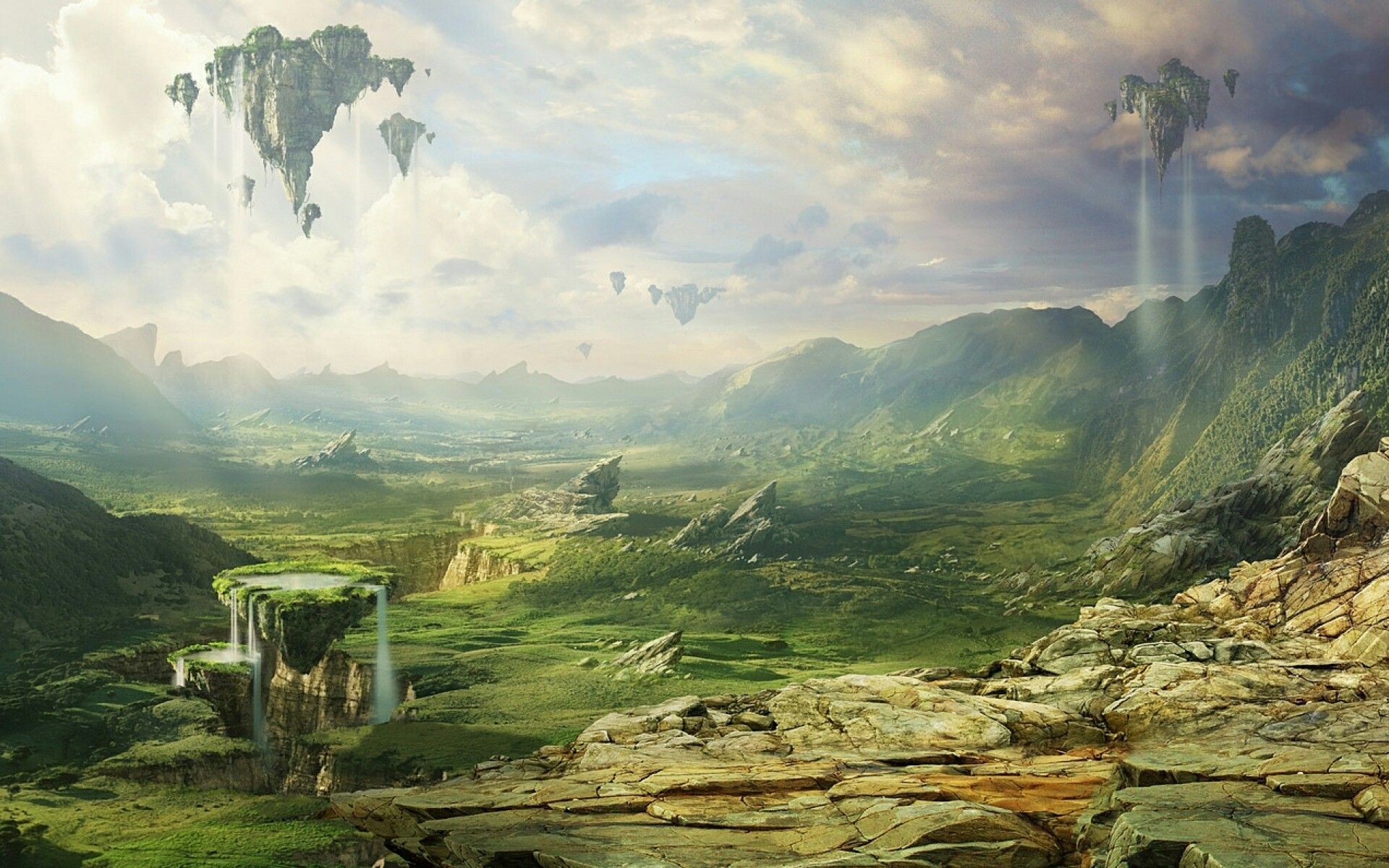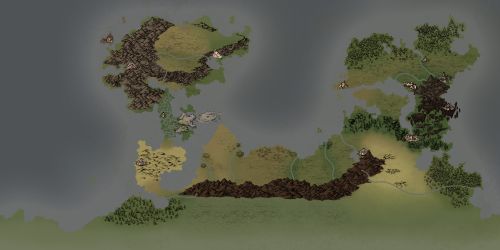Thea
Geography
Astronomy
Once a planet in Eos's habitable zone, Thea was captured by the planet Rhea as it migrated inwards. Now, it is one of dozens of moons orbiting the gas giant, but the only one capable of holding life.
Due to Rhea's mass, Thea is tidally locked to her mother planet. While the rapid speed at which she orbits keeps a day-night cycle of similar length to Earth's days, there are some other implications this holds.
The Thean sky changes depending on where you are on her surface; the people have taken to calling the two sides of the moon "planetside" and "starside."
Planetside, you see Rhea in the sky in one place at all times. You can also see Rhea's other moons (one major, dozens of minor) as they orbit the planet. Locations on and near the equator face solar eclipses nearly every day of the year as the sun passes behind Rhea; in some locations, only a few days of the year offer a full day of sunlight. At night, the side of Rhea facing her moon experiences daytime, lighting the surface of Thea significantly brighter than the full moon on Earth. While this makes it easier to see at night planetside, the light from Rhea hides all but the brightest stars on Thea's sky.
Starside, the opposite effect occurs. The people who never travel from their starside hometowns will never see Rhea in the sky. However, since Thea is her mother planet's most distant moon, there is no clutter in the night sky to wash out the stars. The stars on this side of Thea glow brightly, uninhibited by natural light pollution.
Climate
Rhea orbits much slower around the sun than Earth does: 644 Thean days (and approximately as many Earth days). This combines with Thea's axial tilt to create seasons that are much longer than Earth's. The extended length of the seasons creates much harsher environments in the middle of each season; however, Thea's tilt is not as severe as Earth's, smoothing seasonal transitions and tempering the extremes to survivable levels. The people of Thea have taken to an eight-season calendar, accounting for transitional seasons between the extremely harsh months in the middle of winter and summer.
All season descriptions below describe them as felt in a mid-latitude area, such as Escalade.
Longsun
The middle of summer. A time of swelteringly hot days. Comparable to late June through August, but with higher temperatures and more extreme humidity (extremely high or low levels depends on location). This season is dangerous for outdoor laborers who can't afford to take time off and must work in the sun all day.
Brightleaf
A favorite season of many. Brightleaf comes when temperatures cool enough to spend afternoons in the sun, but still warm enough to spend hours at a time outside. This time of year, the families that can afford it take vacations to places with clearer water or available campsites. Similar to September through early October.
Leaffall
Leaves begin to yellow in the season before, but still cling to their branches. As temperatures cool and vacationers return home, Leaffall begins, bringing long rains and damp earth. Similar to late October/early November.
Coldwinds
Soon the leaves are gone and the rains come less frequently. Instead, bone-chilling winds sweep through the land, warning of whats to come. The elderly begin their travels to warmer weather, and families spend more time indoors. Similar to late November/early December.
Snowfall
When the first snow comes, the people of Thea know its here to stay. The extended winters on Thea mean snow falls and lasts nearly twice as long as on Earth, with little chance of a mid-season warm spell to give temporary reprieve. Most similar to late December through February.
Snowmelt
When the snow levels finally begin to shrink, it's a time of relief for many. Much like our March/early April, Snowmelt is defined by icy paths (as the snowmelt refreezes overnight) and muddy yards. As much relief as this season brings, most simply look forward to warmer weather.
Rainfall
The wet snows of the season before turn to pure rain, and temperatures finally warm enough to keep that rain from freezing overnight. Farmers begin their first crop cycle, those that fleed to warmer weather return home, and restless children clamber outdoors. Similar to late April/early May.
Stormsky
A short, May-into-June season defining the border between the hottest days of summer and the days still warming from winter. Day-long rainclouds now carry thunder and lightning, tumbling over the landscape, bringing tumultuous concert to the land below.
Fauna & Flora
Freya's efforts to terraform the moon mean that most wildlife could be recognizable to Earth humans, with some important differences.
For one, Freya created lifeforms that only exist in Earth's mythos: dragons, griffins, firebirds, the like. However, she feared that they would overtake the ecosystem and destroy all the Earth creatures she worked so hard to bring to their new home. So, she also created megafauna, Earth animals of fantastic size capable of holding their own against the new beasts.
To sustain her creations, and to prevent the starvation that plagued so many on Earth, Freya genetically engineered the wild plants and crops she brought to the new world to increase their nutritional value.
Motion:
Rotation
1.073 Earth days
Orbit of Rhea
1.073 Earth days
Orbital Radius
713,092km, 10.2 Rhean radii
Orbit of Eos
647.875 Earth days, 603.8 Thean days
Qualities:
Mass
2.6473E24kg, .4432 Earth masses
Radius
2,895km, .718 Earth radii
Gravity
.97 Earth gravity
Qualities:
Type
Planetoid / Moon
Major Locations
Remove these ads. Join the Worldbuilders Guild




Comments